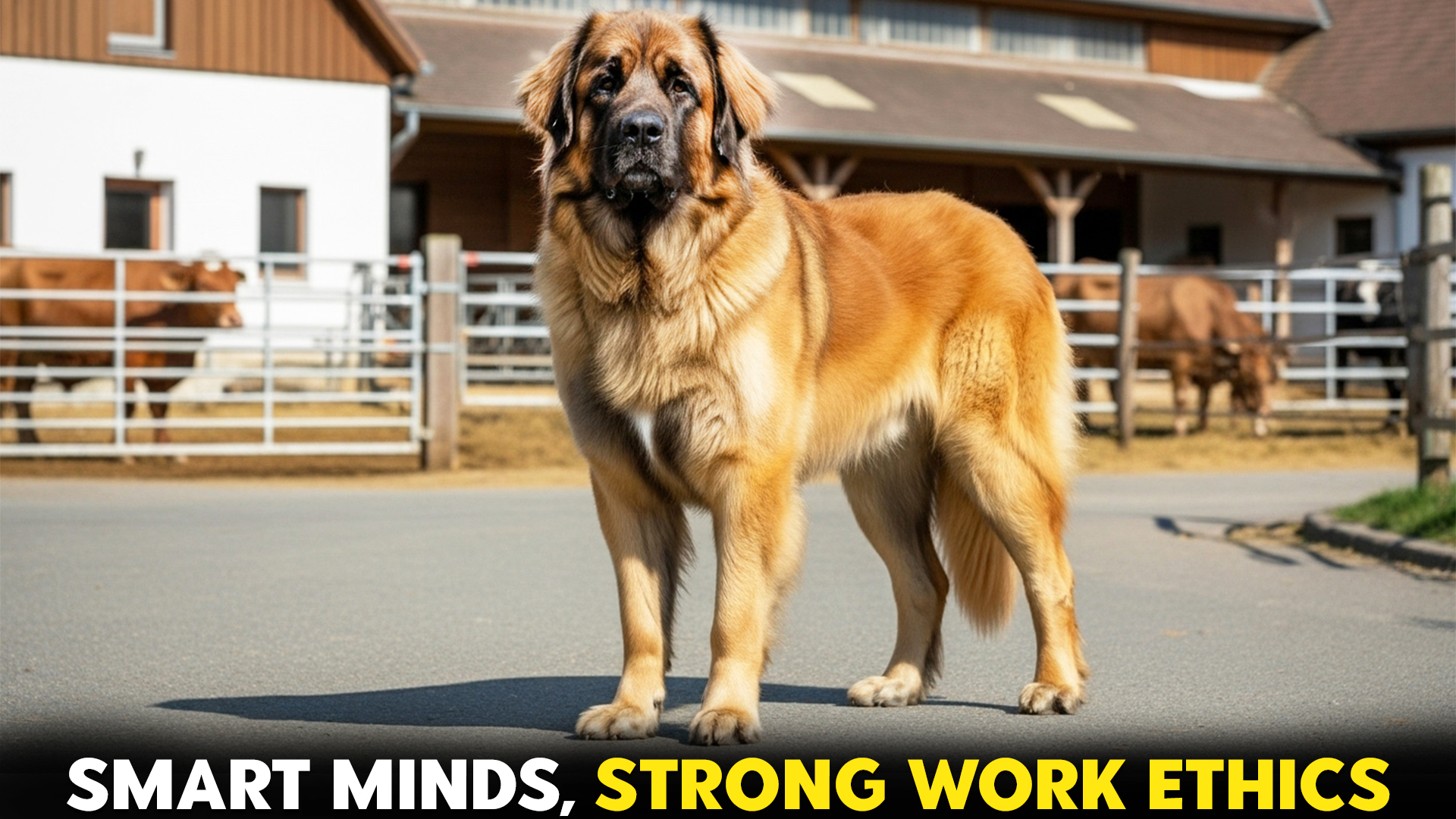When you hear about working dogs, one thing comes to mind: muscles! Sure, size and strength matter, but if you think deeply, the very best working intelligent dog breeds bring something else to the table: brain power!!
They read situations, solve problems, learn new tasks quickly, and adapt when the job calls for it. The mix of instinct, trainability, and calm decision-making is what makes a working dog truly “smart”.
We have rounded up seven of such smartest working dog breeds. The service dogs who can think on paws, the guardians who weigh decisions. The rescue dogs that read a current. The herding dogs that move stock with uncanny timing. The therapy dogs that bring insane emotional calm. This list is for you.
These are the smartest dog breeds within the working group, but more than that label… they are practical, useful, and wired to help humans in real-world tasks. Let’s talk about these most intelligent dog breeds.
Fun Fact!
Did you know that psychologist Stanley Coren broke canine intelligence into three types: Instinctive, adaptive, and working/obedience… and that a dog can be brilliant in one area and average in another? For example, a Border Collie excel at herding and working obedience and a Komondor shines in instinctive flock protection. Different smarts. Different Jobs.
As per the American Kennel Club (AKC), a dog is as bright as a 2-year old child. So, how smart is your dog?
Smartest Working Dog Breeds
1. Rottweiler
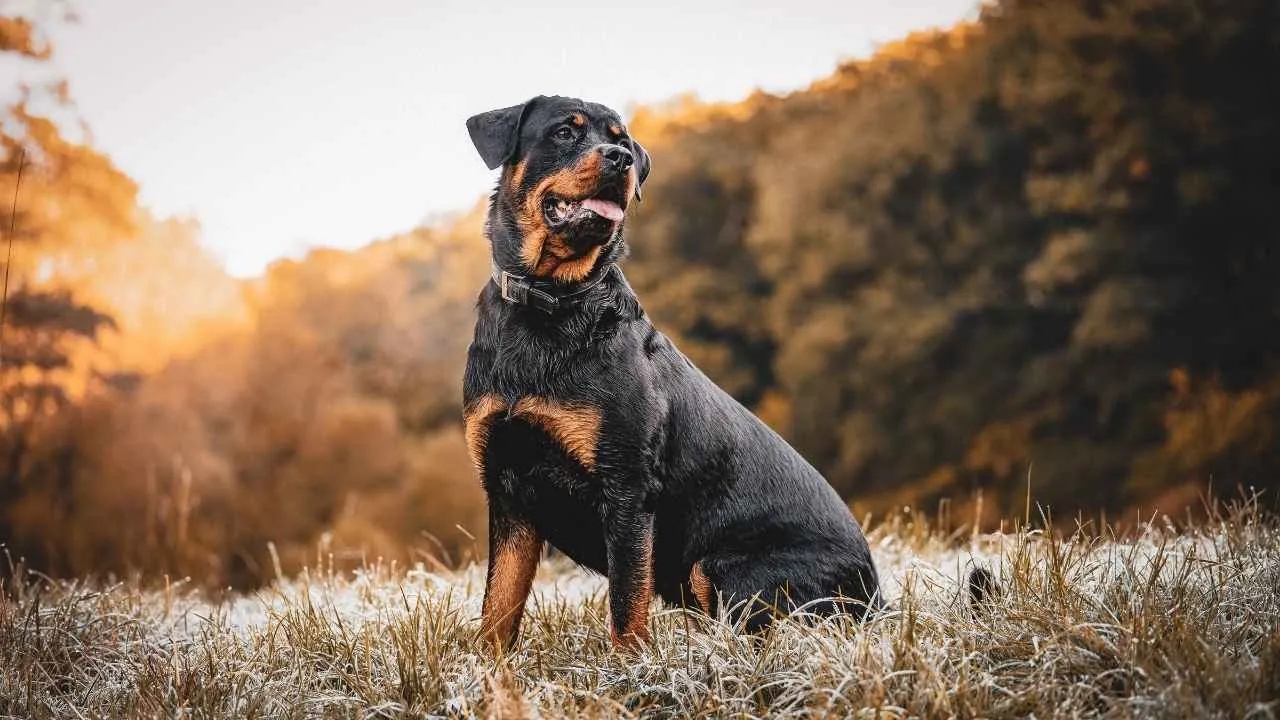
Big, confident, and surprisingly quick-witted, the Rottweiler has old-world drover instincts with modern trainability. A large and affectionate dog breed, originally bred to drive cattle and pull carts, this dog is one of the most popular dog breeds in the U.S. today!
Since day one, Rotties are active and have developed a strong sense for tasks and a natural instinct to protect family and property.
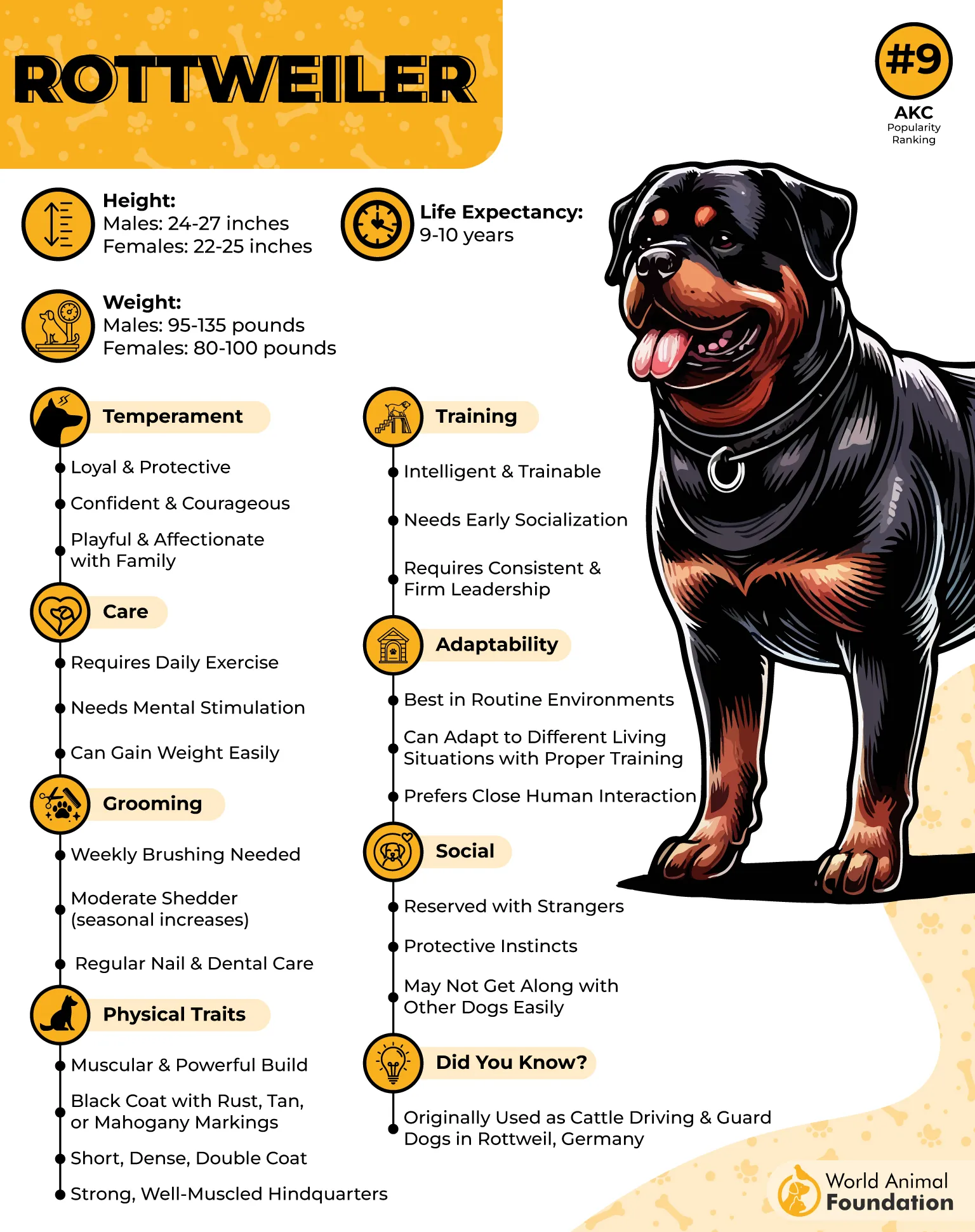
Working dog traits:
Powerful and compact working build; built for real tasks.
High trainability, responds well to obedience training, and clear leadership.
Loyal and alert guard dogs; excellent at guarding and some service tasks, such as physical or medical assistance.
Rottweilers are intelligent dogs that love a proper structure at home. Give an energetic Rottie clear commands and consistent training, and they will surprise you with their ability to learn new tricks and complex tasks.
As per Britannica, to maintain their smarts, they need a fenced yard, daily exercise (long walks or runs), and mental stimulation.
They do best when their brain and body are both used. Obedience, tracking, herding, protection work, and even some therapy or service roles for the right temperament. They are not a “sit-on-the-couch” only dog; they want to be really useful.
2. Leonberger
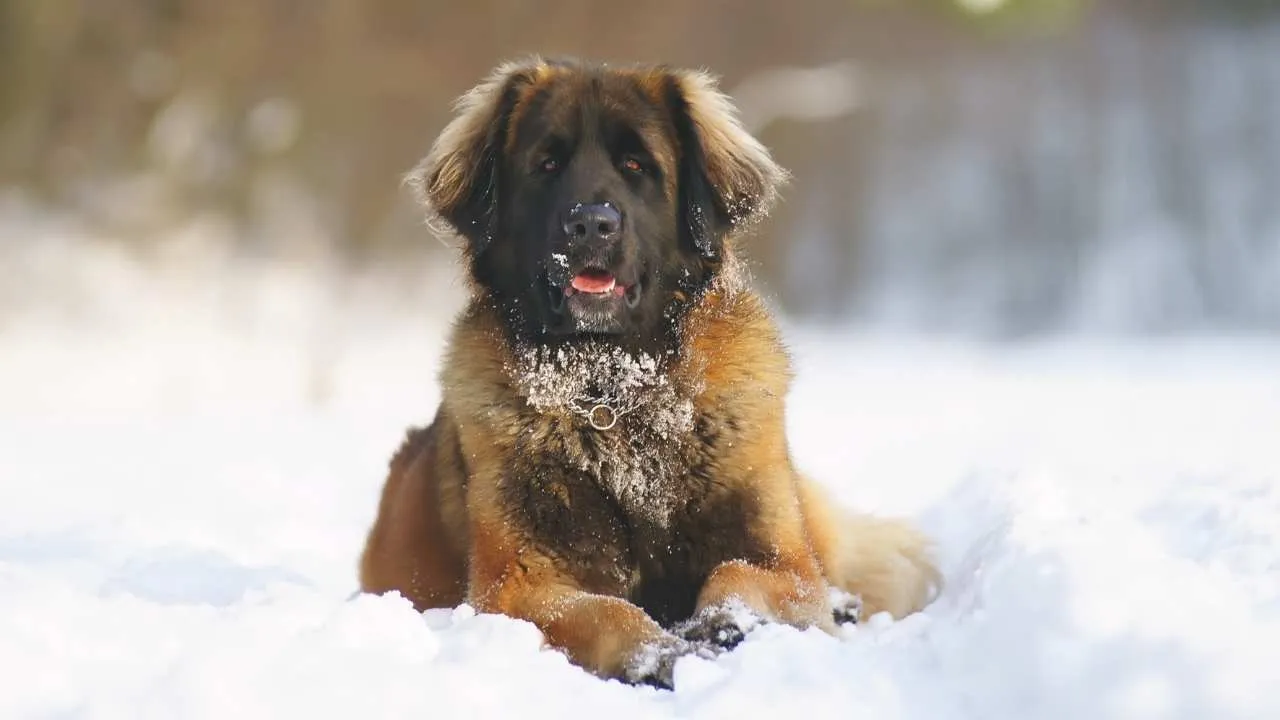
Gentle giants that get on well with everyone in the family? Yes. Smart worker? Absolutely yes!! The Leonberger is a large dog from the working group that has the ability to do reasoning and the brawn to back it up.
Bred as a multipurpose companion and working dog in Germany, Leonbergers have an intuitive sense for people and a steady head under pressure.
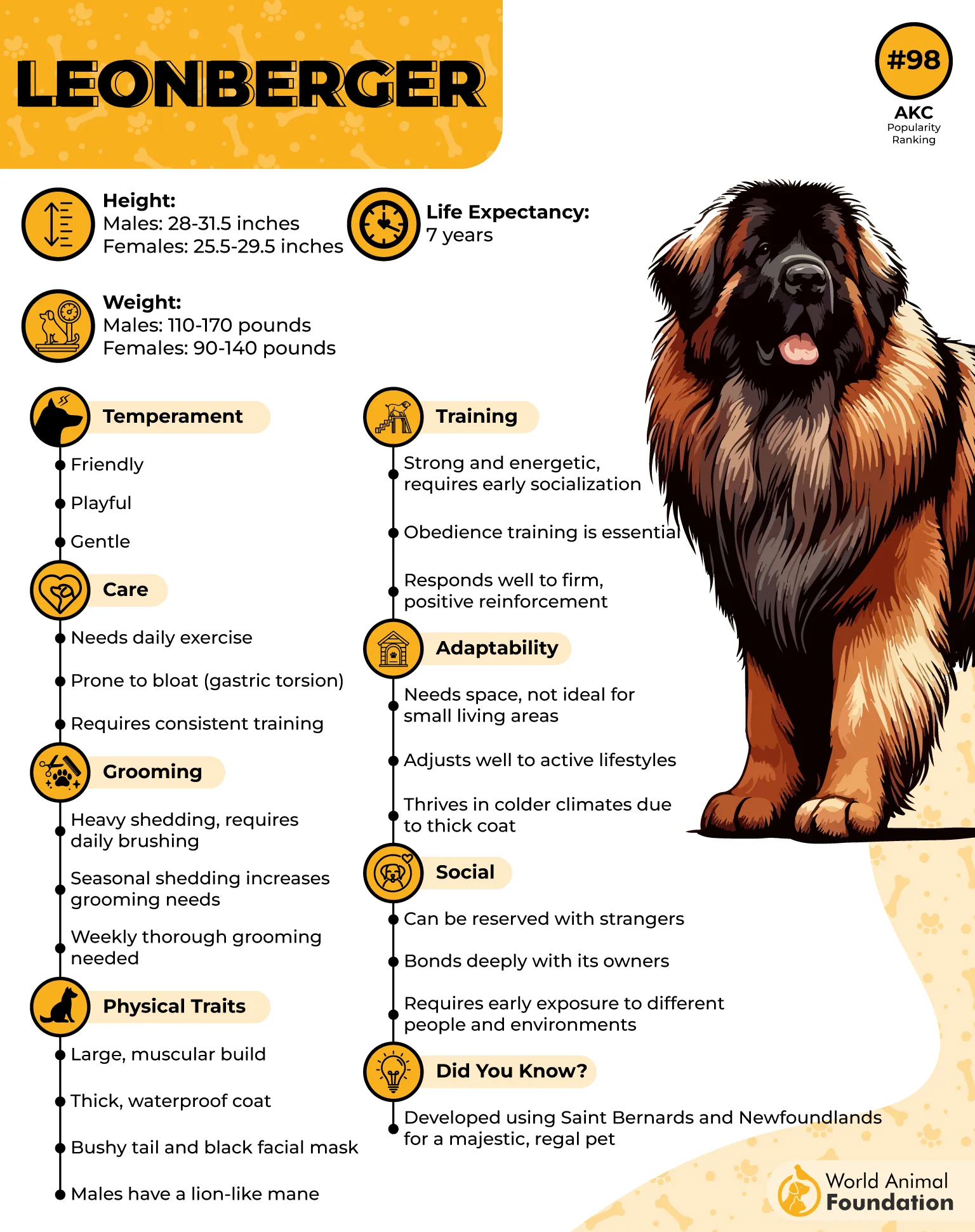
Working dog traits:
Large, steady, and surprisingly perceptive.
Eagerness to please, learn quickly, and with patience and positive reinforcement methods.
Great for family life while still retaining working instincts (draft, water tasks, pulling a cart, agility, as per AKC).
Leonbergers often show both affectionate family tendencies and a strong ability to assess situations. They are not overly frantic learners, but they learn quickly when motivated.
Families who want a big and smart dog that can pull, help around a property, and still be mellow at home will love the Leonberger’s balanced brain and heart.
3. Great Dane
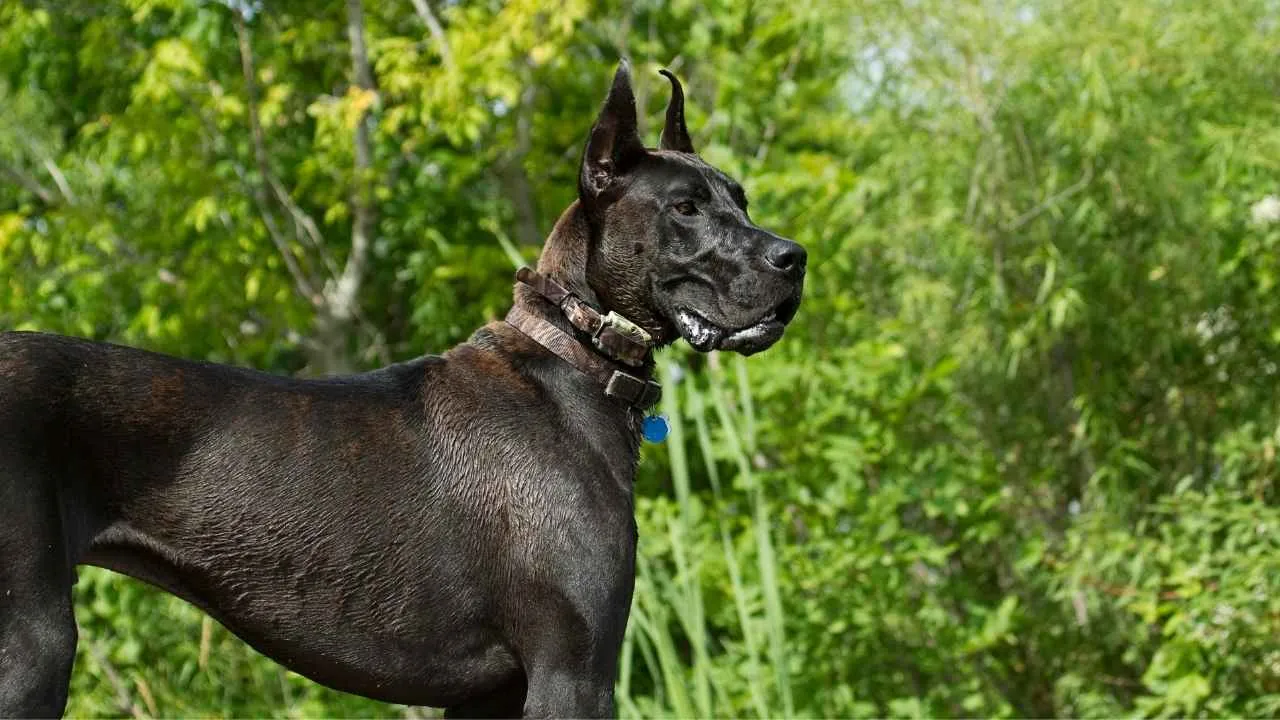
You might think ‘gentle giant’ and stop there, but the Great Dane is a quietly clever dog. Bred originally for boar hunting and later as an estate guardian, this Pennsylvania state dog can read human cues well and is fast to pick up routine and commands.
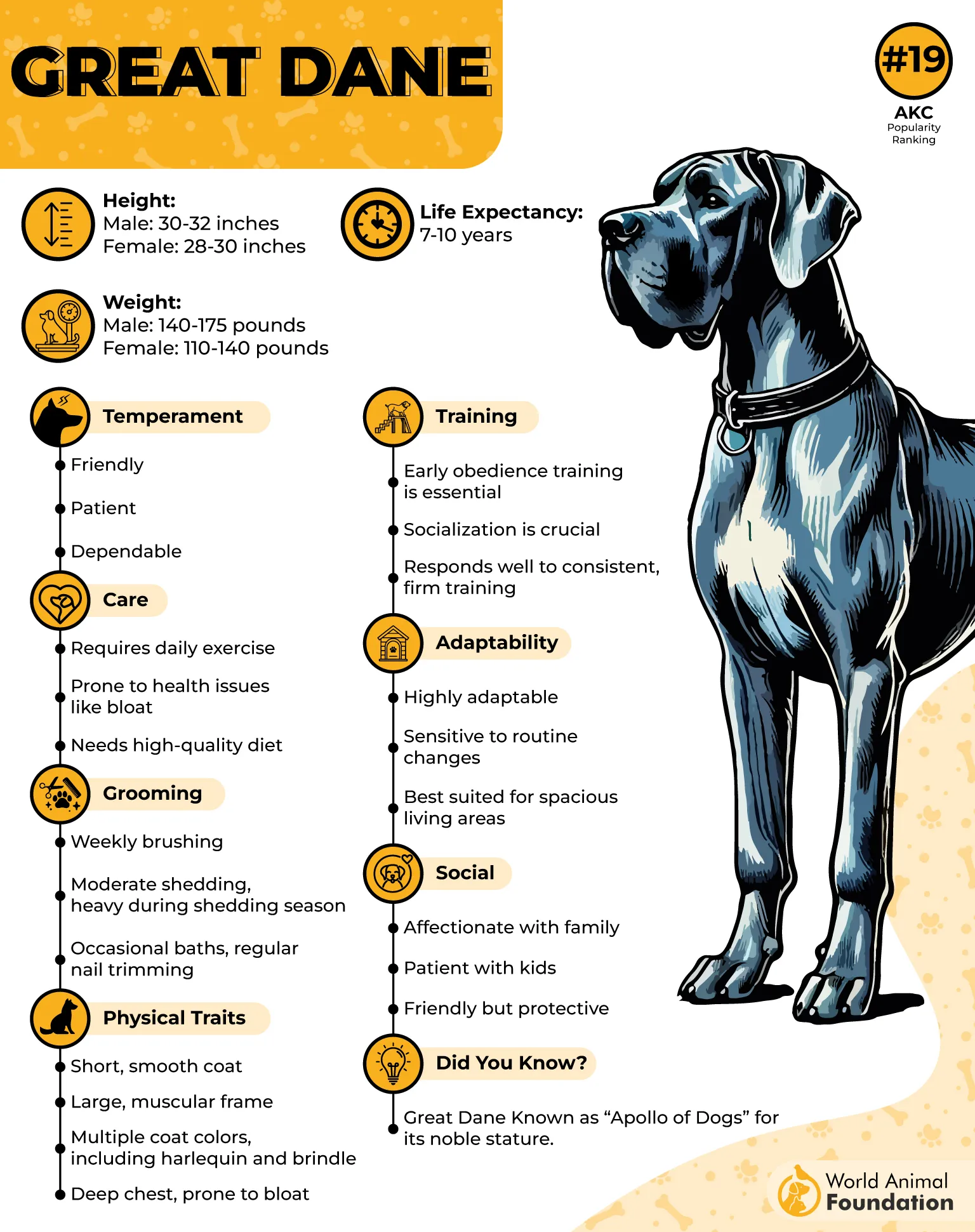
Working dog traits:
Towering presence that commands respect, a natural deterrent, and one of the fastest dogs on Earth.
Calm, attentive, and surprisingly intuitive around people.
Learns household rules quickly; patient with children and family life.
Great Danes are highly perceptive about their environment. They are not hyperactive problem-solvers like some herding dog breeds, but they are whip-smart about social cues; who’s anxious, who’s friendly, what’s routine?
That is some next-level social intelligence, which makes them dependable family guardians and gentle and trainable companions.
4. Great Pyrenees
The Great Pyrenees is a classic livestock guardian. These dogs are independent, observant, and built to think on it’s own.
That independence is a sign of intelligence in dogs: a Great Pyrenees can judge threats, and as per PetMD, they are known to bark to alert the families of impending danger, and often decide what would be the best course of action.
Working dog traits:
Instinct-driven guardian of flocks; watches and judges without constant orders (independent, yes!!).
A steady, quietly authoritative, and calm dog.
Needs clear leadership and early socialization for balanced behavior around families.
Don’t confuse “independent” with “stupid”. Great Pyrenees have a different kind of canine intelligence: they evaluate and act. They are brilliant at reading predators and people near their charges.
For families with acreage and livestock, their keen sense and guarded instincts make them unmatched. But keep in mind: they are not obedience robots; they need purpose and consistent guidance.
5. Komondor
That mop-like coat; most people remember only that about a Komondor. What they might not know is how instinct-driven and sharp this breed from the herding group is.
Komondors were bred for centuries as flock guardians in Hungary. Being independent dogs, they think for themselves and execute protection tasks without being micromanaged.
Working dog traits:
Ancient guardian instincts bred to guard sheep against wolves.
Highly protective, extremely loyal to family and flock. Not very energetic dogs.
Needs strong leadership, mental stimulation, and clear boundaries to be well-behaved dogs when they grow up.
Komondors are brilliant at one job: protecting. It means they can be slow to obey a stranger’s command but lightning-fast when protecting their people or animals.
Their working intelligence is specialized. But, they are not always suited to casual pet life unless the owners are committed to training, structure, and purposeful work.
6. Newfoundland
Brains and a built-in vest. The Newfoundland dog is one of the smartest water rescue dogs you will ever meet.
These dogs have been used for centuries on boats and shores to share lives. Their mix of strength, patience, and problem-solving makes them natural rescuers.
Working dog traits:
Powerful swimmers with a strong desire to rescue and perform lifesaving tasks.
Patient, forgiving, and very attuned to human emotions. “Nanny dogs” for this same level of intelligence and emotional attachment with the family.
Learns complex tasks, excels when given structured training and purpose.
Newfies show a different side of dog intelligence: emotional smarts. They sense distress, remain calm, and apply their training in rescue scenarios.
For families who want a brainy and service-oriented family dog (and who have the space to handle the size of a Newfie, 150 pounds and maybe more), Newfoundlands are loyal, thoughtful, and exceptionally gentle.
7. Black Russian Terrier
A relatively modern working breed (created after World War II, as per Purina), the Black Russian Terrier was developed for military and guard work in Russia. It is a multi-talented dog: protective, trainable, and a quick learner at picking up complex sequences of tasks.
Working dog traits:
Bred for protective and military duties and loyalty; serious work drive.
High intelligence and high trainability; excels in obedience competitions, protection work, and service tasks for experienced owners. Boundless energy, need 30-60 minutes of exercise daily.Alert, loyal, and needs regular mental stimulation, and enjoys spending time on exercise.
The Black Russian Terrier’s intelligence shows in its ability to take direction, perform complex protection work, and adapt to different roles. They are mostly compared to German Shepherds for their work ethic and trainability, but BRTs bring a unique toughness, added with thoughtful decision-making.
They thrive when given meaning, structure, and consistent training. Truly, one of the smartest breeds from the times of the USSR.
Conclusion
So, are these the absolute smartest working dog breeds? Well, “smart” depends on the job. A Rottweiler’s guard smarts are not the same as a Newfoundland’s rescue smarts or a Komondor’s flock instincts. But each of the above well-known breeds shows a mix of curious natural instinct, trainability, and adaptability more than other dogs.
If you care about dog intelligence, pick the breed whose type of smarts matches the work you want done. And if you want a dog that will keep learning, surprising you, and standing by your side always, well, you are looking in the right direction.


